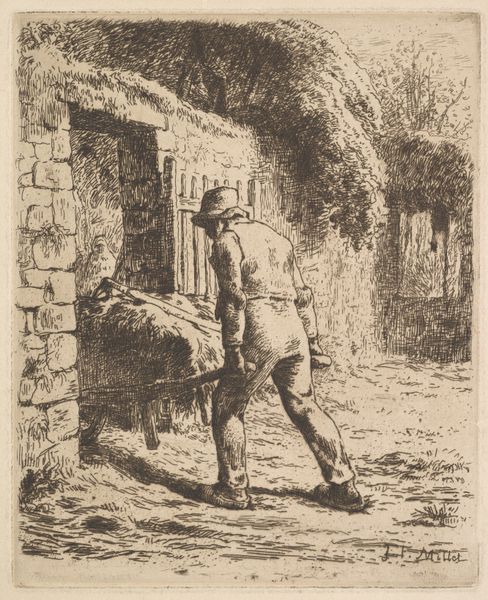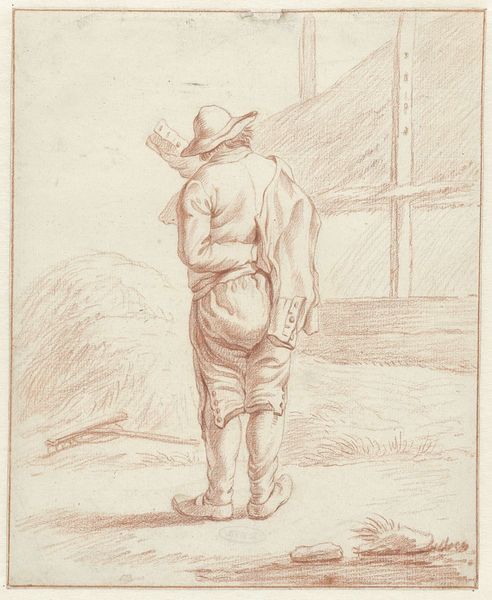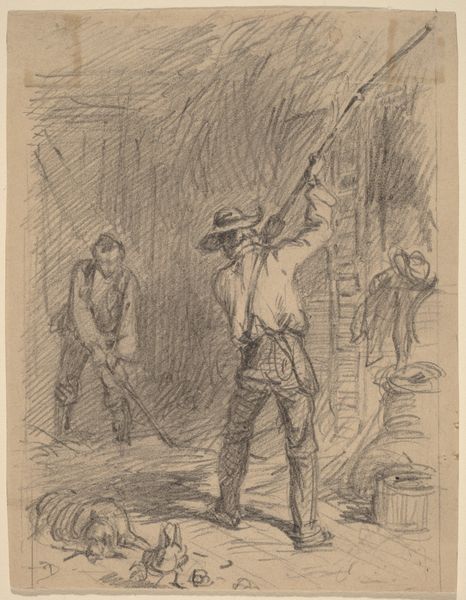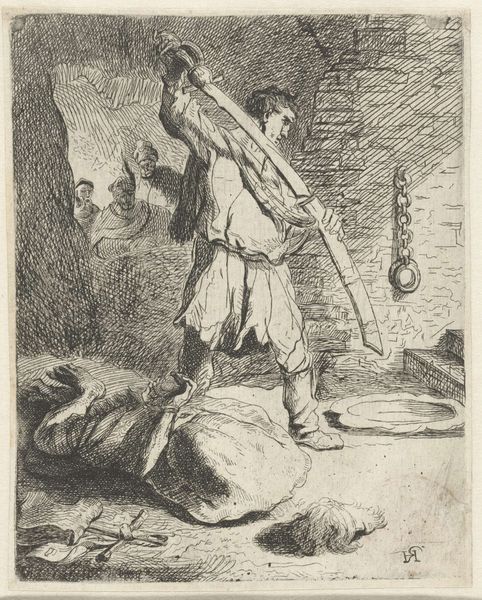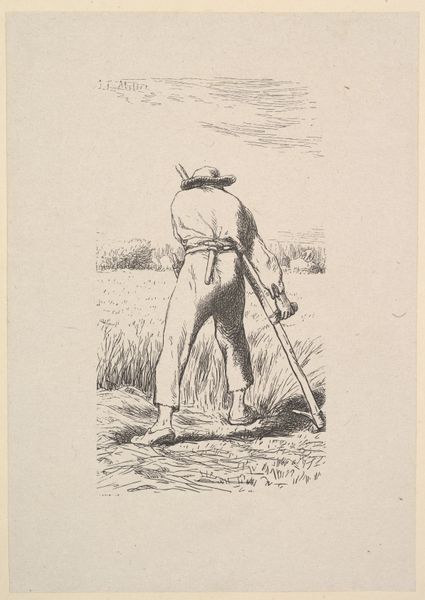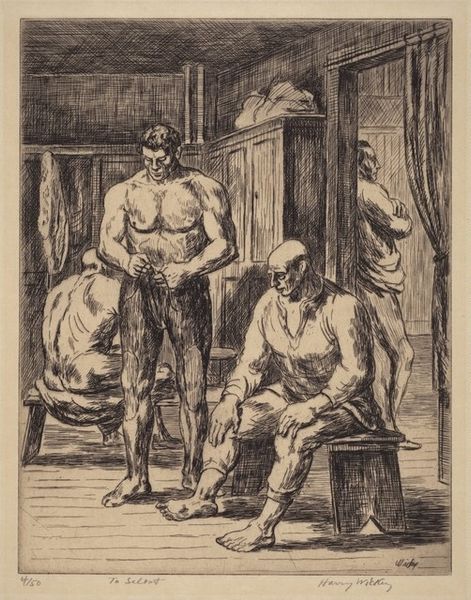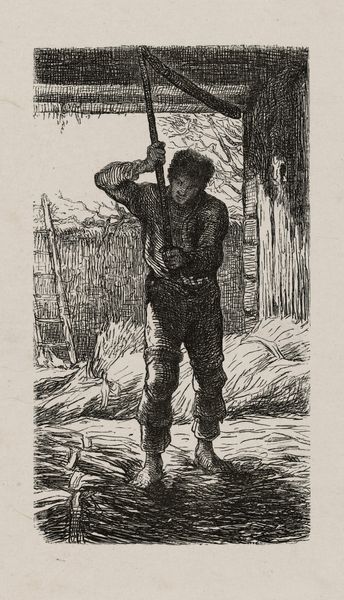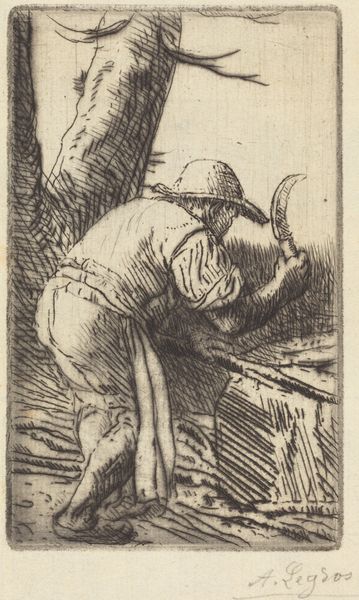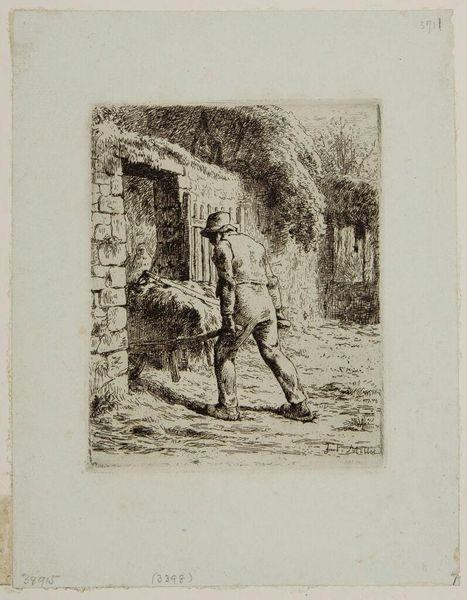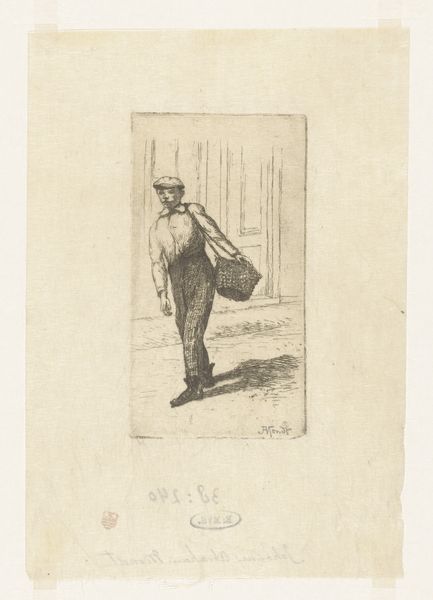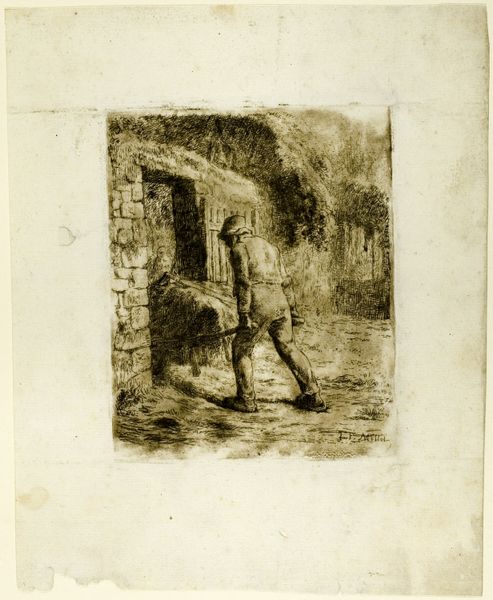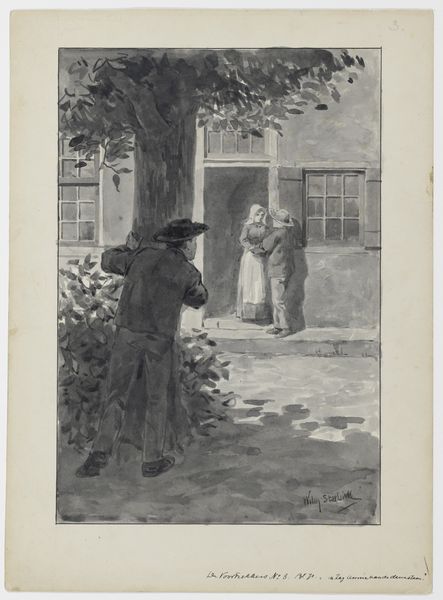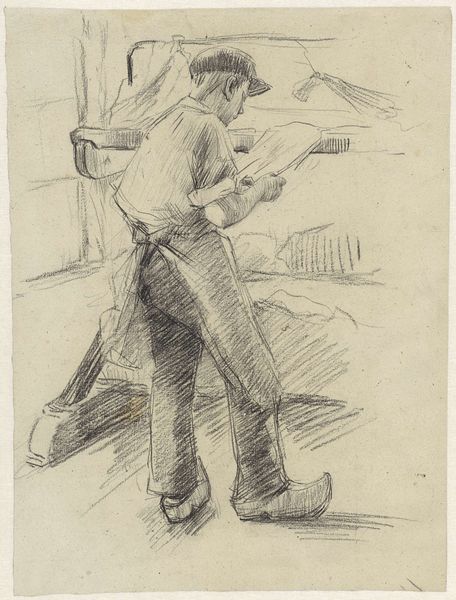
drawing, pencil
#
pencil drawn
#
drawing
#
landscape
#
figuration
#
pencil
#
genre-painting
#
history-painting
#
realism
Copyright: Public Domain: Artvee
Editor: We’re looking at Jean-François Millet's "Study for Man with a Wheelbarrow," created around 1855-1856 using pencil. The sketch feels weighty, grounded... I’m struck by the stark contrast between the defined figure and the softer, almost blurred, background. What jumps out at you when you examine this work? Curator: Immediately, it’s the dynamism created through line. Observe how Millet uses the varying thicknesses of pencil strokes. He's less concerned with precise representation than with conveying energy, movement. The man, though simply rendered, leans into his task. Do you see how the converging lines of the wheelbarrow, and the positioning of the figure, contribute to this effect? Editor: Yes, absolutely. The lines create this strong sense of direction and movement. Is there anything to learn from what *isn't* explicitly drawn, and is suggested, instead? Curator: Precisely. The suggestive quality is critical. Note how details in the background – the building and the foliage – are evoked with loose, almost frantic scribbles. This highlights the central figure through contrast but it also sets up an atmospheric tension between clarity and ambiguity. Millet masterfully manipulates line to construct space and imbue it with feeling. It showcases that it’s not about the what, it’s all about the how. Editor: So, focusing on the visual elements – the lines, the contrast – allows us to really appreciate Millet's skill in conveying a sense of labor and the inherent weightiness in this everyday scene. Curator: Precisely. It allows for an engagement beyond simple representation; it elevates the work to the level of structural commentary, where meaning resides not just in what is depicted, but in how it is constructed.
Comments
No comments
Be the first to comment and join the conversation on the ultimate creative platform.
